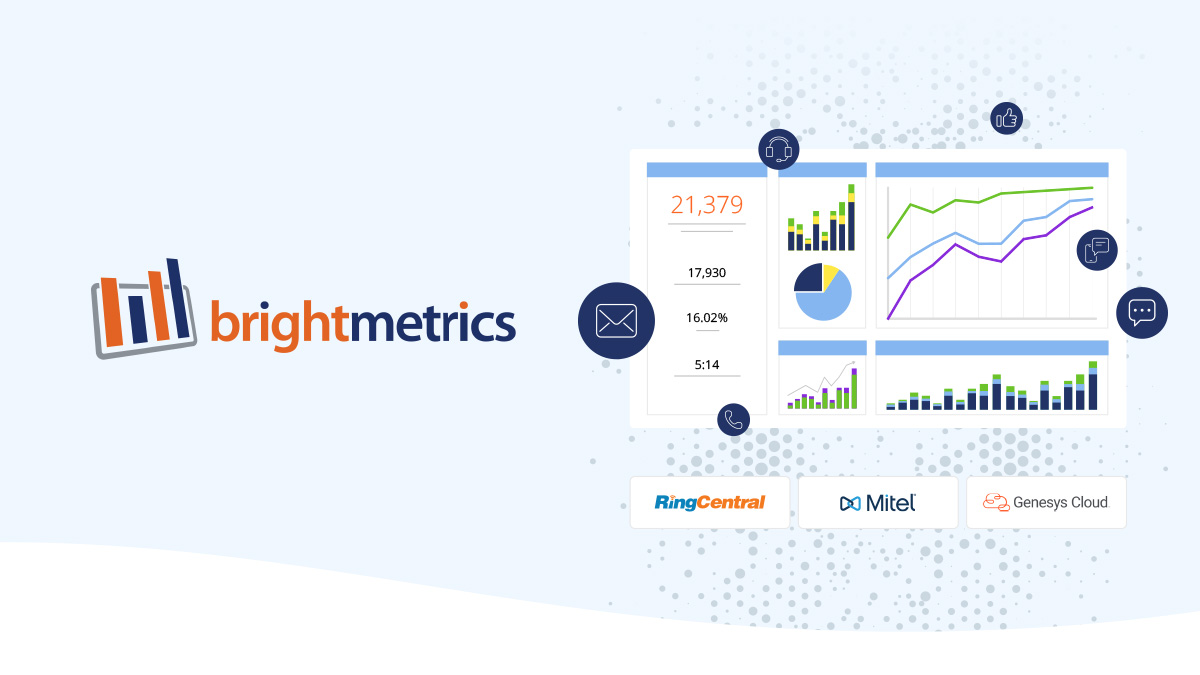We have to admit, we feel a bit shocked when people tell us they are accessing all the insights they need from their phone system or contact center software’s native reporting tool.
Why do we feel so strongly about this? Well, here are just a few examples where native reports fall short:
- The single-point-in-time snapshots don’t give you the context of what is happening over time.
- The layout/format of the reports is static, forcing one way of looking at your contact center metrics.
- The numbers the system spits out may not be providing an accurate snapshot. For example, did you know that on the Mitel MiVoice Connect platform, when you run a report against users, not all the calls for those users are showing up?
But the biggest struggle we have with native reporting is that very few of the standard, built-in report templates offer up any real, actionable information. The majority of these reports are sorely lacking data that provides you accurate insight into your current contact center activity or current agent performance that can clue you in on the next steps to take.
Having an understanding of call volumes, durations, times, etc. is extremely important information because it can offer context. But will you really act based on that information? Let’s dig deeper.
If you say, for example, that you will staff up a work group or a queue if call volumes rise, that is potentially the correct course of action. In order to be certain, the real metric that you would want to review for that situation is hold times. If call volumes rise but hold times don’t, then you likely wouldn’t need to make a change. To be fair, hold time is something that most phone systems offer in their canned reports. However, they typically do not offer hold times as a trend, which is even more important.
So, what are our top 3 contact center metrics that can directly affect customer satisfaction and ARE actionable today?
1. Agent/User Transfer Rate
This is particularly important for a Group (we’ll use this generically to describe a workgroup, queue, group, etc). Calls that come into a Group are typically purpose-driven calls. Those calls arrived there for a reason (either transferred there from another user or from an auto-attendant). When a customer gets sent to a Group, they expect that their issue will be handled there. When this doesn’t happen with the next person they talk to, at best, the opportunity to provide excellent service is lost. At worst, the customer is disappointed and frustrated.
If a Group as a whole has a high transfer percentage (a large number of calls are answered by an agent and then are transferred to someone else to be completed), it is often a sign of an improperly configured or unclear auto-attendant. In other words, it’s a sign that calls are ending up somewhere they should not be.If an agent, or a small group of agents, has a transfer rate substantially higher than the Group as a whole, it is typically an opportunity to offer additional training to that group in order to improve their job performance.
2. Agent Available Time
The time that an agent is available to take a call is, by definition, the time that the agent is not on a call. If you have a Group with a substantial amount of available time in it, it likely indicates that you are overstaffed in that group and that some of those people might be better used in departments or call centers where they can directly affect strategic business function. Of course, you would want to consider things like busy times of day, days of the week, and seasons, but with most phone systems it’s typically very easy to add and remove capacity from a Group on the fly.
Did you know that you can have hold times that are actually too short? A lot of companies are proud that their hold times are less than 15 seconds, but they typically have a lot of agent availability in order to facilitate those hold times. Depending on your business, if you can reduce agent availability while keeping your average queue times down to around 1 – 1.5 minutes and peak times down to under 2 minutes, there is very little loss in customer satisfaction with potentially huge savings in labor costs.
3. Call Disposition
This is what happens to a call in any given scenario. In particular, it’s important, but difficult, to see this in a hunt group scenario. Most hunt groups have a backup hunt group for when the primary one isn’t answered. But building reports around this can be challenging, despite the importance of understanding what’s happening in these situations.Again, these things depend on your particular business, but a hunt group that is consistently rolling over to the backup group is likely not staffed or configured properly. The function of the primary group is to have agents trained to handle calls that are coming into that particular group. When the calls roll to a backup group, you are sending the call to a less-optimal group (it might be less optimal due to training, location, or some other reason). This can be legitimately necessary, but if it is happening too much, it is a sign that the primary group needs something. It might be additional training, more time to grab the call, or shifting the routing of those calls to a Group with queues instead of a hunt group. Regardless, constant rollover is a signal you shouldn’t ignore.
Call Disposition is also great for tracking what happens to calls that go to users, groups, route points, or any other place in your system in which it’s important to understand how calls flow. These are just three critical and actionable contact center metrics that should be tracked not only in the context of a point in time but also (and often more importantly) trended over the course of time. It’s likely that none of these are available through your system’s native reporting. That’s why we’ve developed Brightmetrics™. We enable anybody in your organization to discover key business insights through the analytics of your phone system and/or contact center data in our services, empowering better business decisions to efficiently deliver your best customer experience.
Explore Our Customer Success Stories



